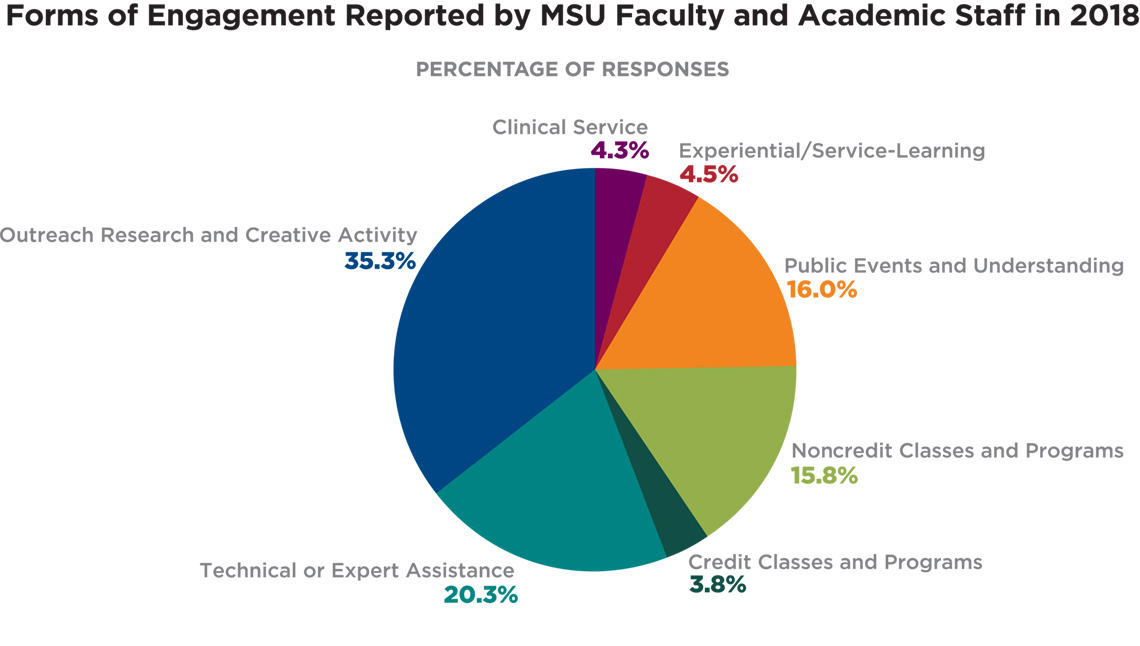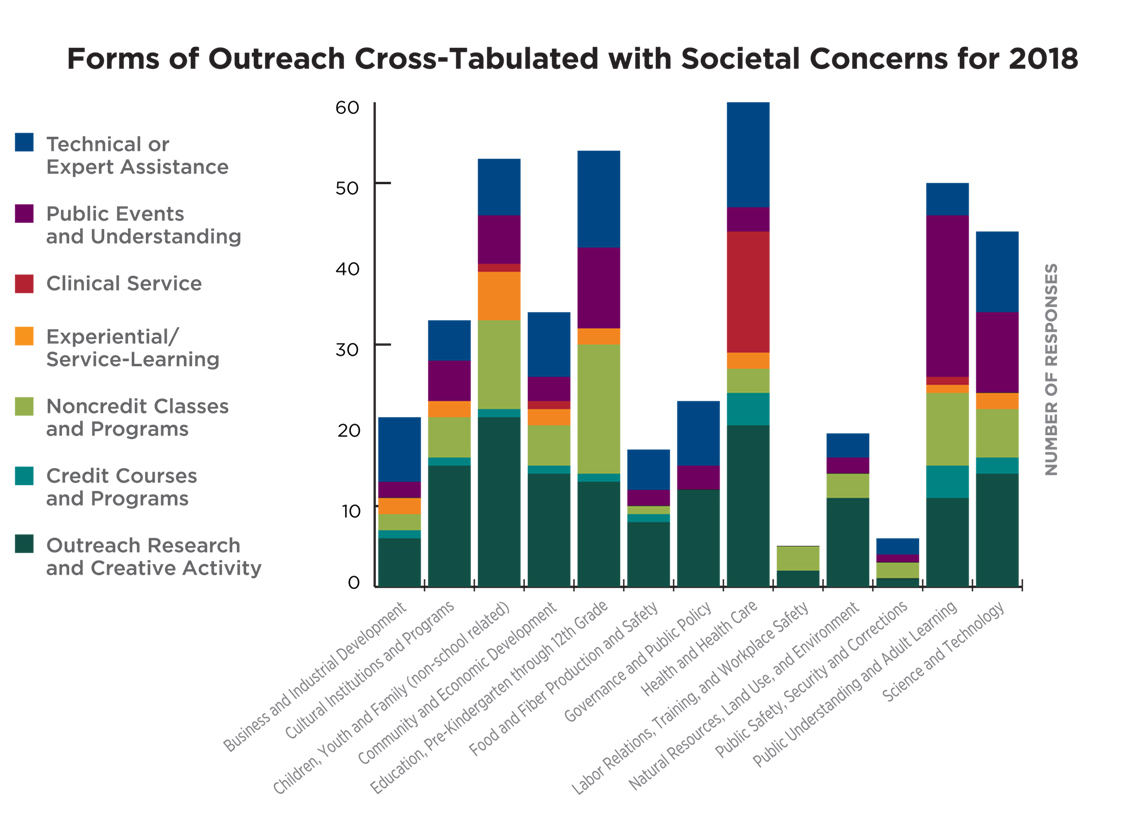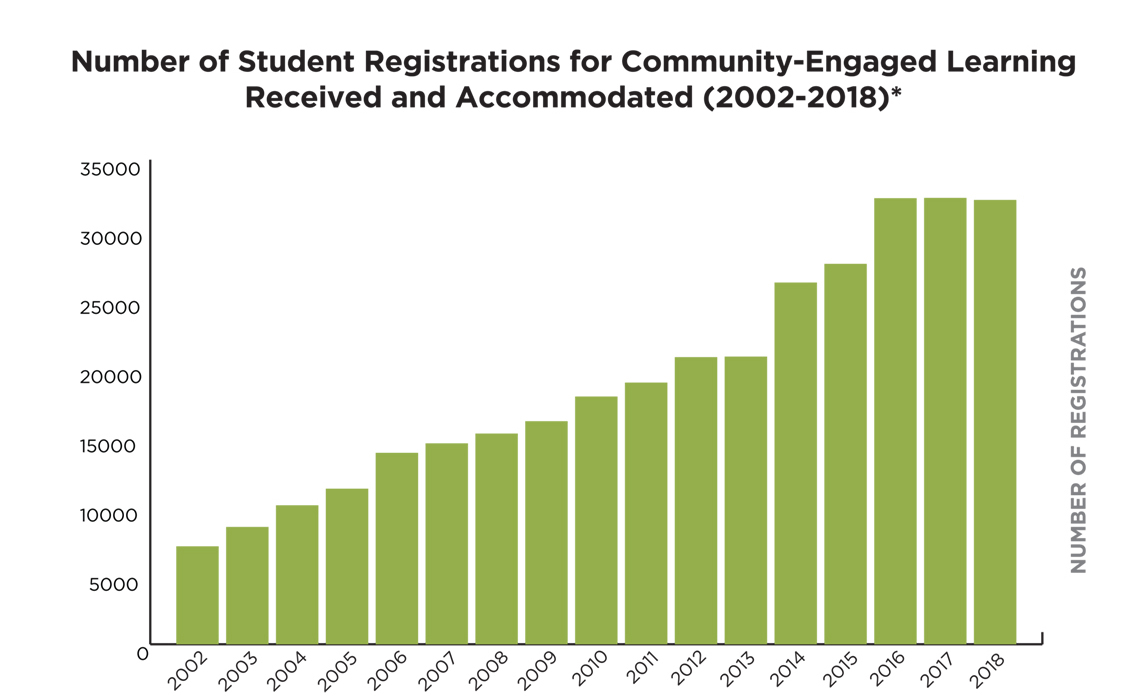Outreach and Engagement at Michigan State University, 2018
Sponsored by MSU's National Collaborative for the Study of University Engagement (NCSUE), the Outreach and Engagement Measurement Instrument (OEMI) gathers data about the outreach activities of MSU faculty and academic staff. The information is self-reported and participation in the annual survey is voluntary. Data for 2018 were collected between February and April 2019 and represent the 15th year of data collection; 461 faculty and academic staff responded to the survey. Since 2004, 4,374 distinct (non-duplicative) respondents have reported their outreach and engagement through the OEMI. For this snapshot, OEMI data are augmented with data from the service-learning and civic engagement student registration system.
OEMI results for 2018 include the following:
$9,572,602
Value of salary investment by MSU faculty and academic staff in addressing issues of public concern (data from those reporting outreach activities on the OEMI)
94.2%
Respondents whose outreach contributed to achieving Boldness by Design (BBD) imperatives:
71.6% = Enhanced the student experience
76.3% = Enriched community, economic, and family life
38.9% = Expanded international reach
55.6% = Increased research opportunities
51.8% = Strengthened stewardship
68.1% = Advanced our culture of high performance
312
Number of specific projects/activities reported
Of the respondents who described specific projects/activities:
81.8% = Reported working with external partners
70.1% = Reported having created intellectual property and scholarly outcomes
59.9% = Reported that their outreach work impacted their scholarly or teaching practices
32,093
Number of student registrations for community-engaged learning and/or community service placements during the 2018-2019 academic year. Of those student registrations, 43% (13,833) were for community-engaged learning placements as part of an academic course or program and 57% (18,260) were for cocurricular community service.
* The number of "responses" is greater than the number of "respondents." Respondents were given the opportunity to describe their engagement activities for up to two areas of social concern; each description was counted as a separate response.



* The number of "responses" is greater than the number of "respondents." Respondents were given the opportunity to describe their engagement activities for up to two areas of social concern; each description was counted as a separate response.